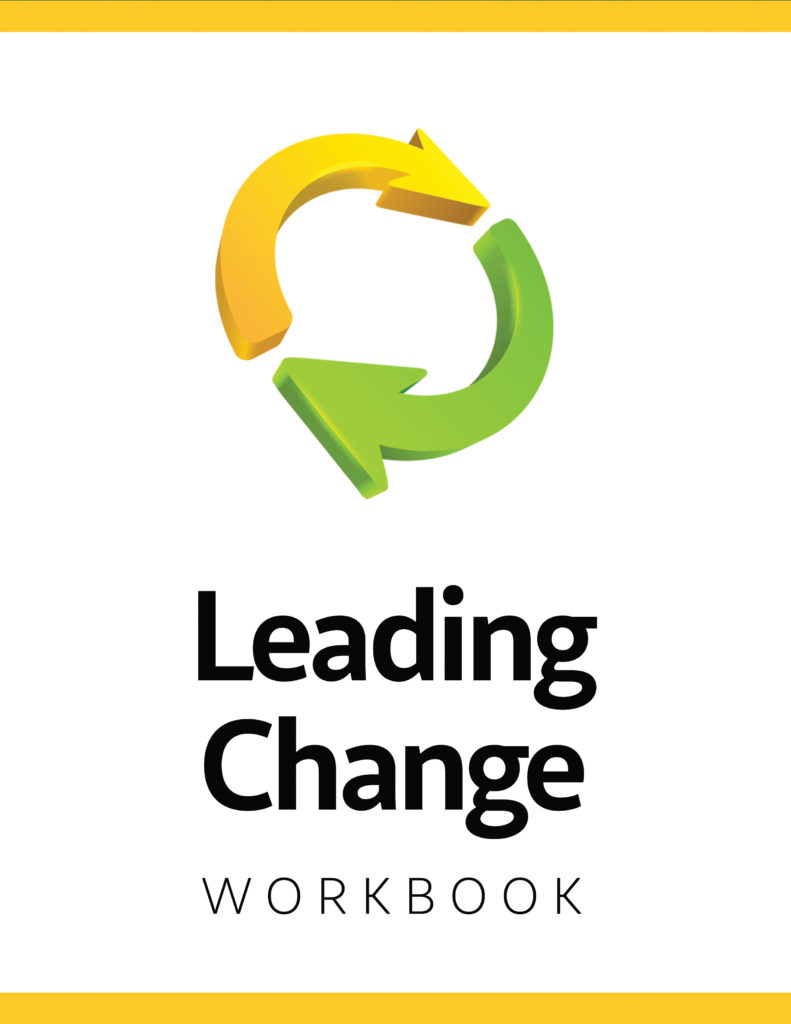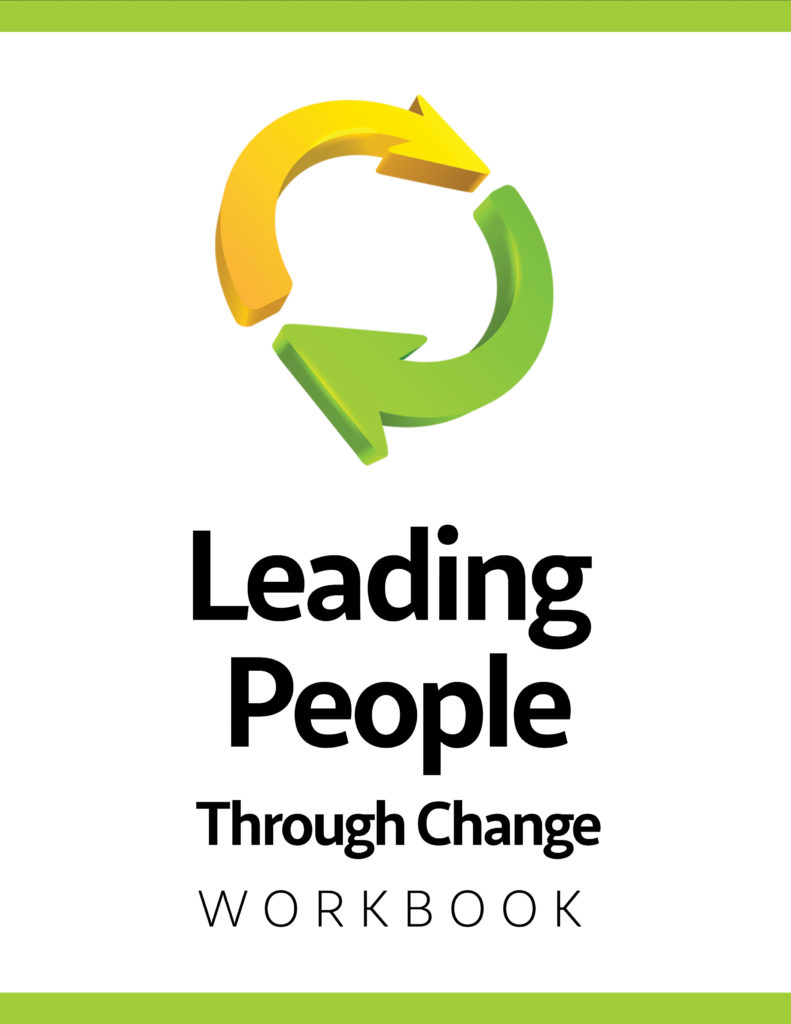We are a management consulting firm that specializes in strengthening individual and organizational performance. We partner with client organizations to improve their ability to out-perform the competition. We integrate our Consulting, Leadership Development, and Change Management services to provide full-solutions to our clients’ needs. These solutions typically fall into three areas: keynote speeches, leadership development workshops, and consulting.
1. Change the Way You Change!
The ability to accelerate organizational change is arguably the most important role of a leader, yet one of the least understood. While individual leaders may excel at creating long-range strategy or 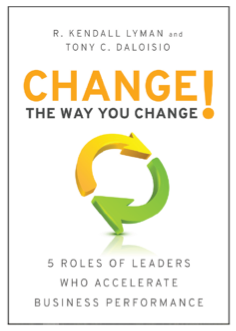 executing short-term plans—skills they acquire through innate ability and experience—few have mastered the art of getting people to change the way they approach their jobs.
executing short-term plans—skills they acquire through innate ability and experience—few have mastered the art of getting people to change the way they approach their jobs.
CHANGE THE WAY YOU CHANGE! shows how to manage and blend the five roles of great change leaders to create and shape the future state of an organization:
-
Focus
-
Align
-
Engage
-
Lead
-
Sustain
When these roles are played well, it shifts how leaders think and talk about change, approach change, and elevate what they do as a leader of change. Successful change is about getting both the technical solution right and helping other leaders, managers, and employees want it. When employees are committed to change and the organization is aligned to reinforce that commitment, transformations are accelerated. Sustainable change only happens when individual, team, and organizational transformation happen concurrently.
2. Own Your Own Engagement!
The Facts: Highly engaged employees get results with energy, passion, and purpose. They stay longer, innovate faster, and execute better. Organizations with highly engaged employees outperform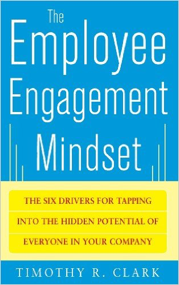 their rivals in operating income (19 percent), net income growth (14 percent), and earnings per share (28 percent).
their rivals in operating income (19 percent), net income growth (14 percent), and earnings per share (28 percent).
The Challenge: The bad news is that only 25 percent of employees are highly engaged. Most contribute only a fraction of their talent and discretionary effort. Searching for the secret sauce, organizations chase everything from gimmicks to highly complex theory. Rarely does any of it work.
The Solution: A closer look at high engagement reveals two remarkably consistent patterns: (1) The highly engaged take personal and primary responsibility—they own their own engagement; and (2) the highly engaged apply six drivers as personal patterns and only expect the organization to play a support role.
Drivers of Engagement: On an individual level, Six Drivers of Engagement™ represent “personal processes”. On an enterprise level, they represent “organizational systems.” Most approaches to engagement are narrow, incomplete, and temporary. This keynote will help you learn what drivers will better enable engagement of your people and what it will take to create an organization that will enable that engagement.

3. Building a High Performing Senior Leadership team. The Great team fantasy revealed!
Effective teams always outperform less effective teams! We all want to be a part of a great team, but the truth is that most of us have been on very few! What is it that makes the difference and how can you as a leader create the conditions for a highly productive team? This is the subject of this provocative, well-researched, dynamic, and practical presentation.
4. Creating a Culture of Excellence.
The culture that you have created as a leader is yours, it follows you around, and is a direct result of the direction, communication, interpersonal skills, and systems that you set in motion with your company or team! 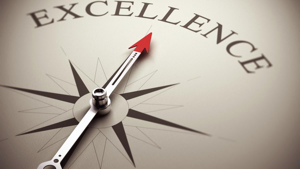 Understanding the parts of this unique puzzle that we call a “culture” is the main focus of this talk. We will look at three specific elements that are critical to success.
Understanding the parts of this unique puzzle that we call a “culture” is the main focus of this talk. We will look at three specific elements that are critical to success.
-
The landscape of your leadership influence—how you model the culture you are trying to create
-
The effectiveness of your leader teams at L-2 and L-3 levels
-
The unique organization systems, strategy, processes, measures of success, and execution disciplines that you as the leader set in motion
5. Your Winning Strategy.
This talk is aimed at sales teams, sales agents, and sales managers across a variety of businesses. The focus of the keynote is on four things that all sales and individual performers desire:
-
How can you strengthen and solidify your role as  a trusted advisor to your clients?
a trusted advisor to your clients?
-
What actions/strategies can you initiate to improve your sales and productivity in the next year?
-
What actions can you take to build and sustain a high performing team to support your performance in the next year?
-
What can you do to ensure you execute on the ideas you have selected and be sure your team does the same?
This is a fast paced, highly practical, and easily applied talk/workshop. It is highly interactive and people leave with concrete actions they can take to improve.
6. The Landscape of My Leadership Influence
This session is designed to provide a lens or perspective for the participants to examine their leadership influence quotient in the organization. It is based on exploration, assessment, and action in five critical areas:
-
Network Matrix Leadership. What is the key matrix of people that make up your leadership landscape including stakeholder groups who either you influence or need to be influenced by your 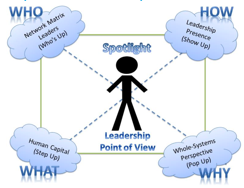 leadership? Is your Net-Matrix structured correctly? And what is the quality of the relationships in this matrix? Exercises examine all three questions including what needs to start/stop/change to have focused plan of action to improve.
leadership? Is your Net-Matrix structured correctly? And what is the quality of the relationships in this matrix? Exercises examine all three questions including what needs to start/stop/change to have focused plan of action to improve.
-
Show-Up. What is your leadership presence? How do you show up as a leader? We will share research about high performers in this area, and allow people an opportunity to examine this critical social capital currency for their own leadership. People will leave with specific actions to differentiate their leadership presence.
-
Whole-Systems Perspective. What is driving (or inhibiting) your results? Research shows that leaders who “pop their heads up” and look at problems and opportunities from an enterprise point of view are much more successful. Leaders who understand and work on issues that are interconnected add the most value.
-
Human Capital. What practices enable human capital? Here we will examine how you can use networking, and “water cooler skills” to provide a basis for your influence. This area is based on some important research from HBR/MIT team matrix research.
-
The Leadership Point of View. Where do you have the greatest influence as a leader? The purpose of this lens is to help leaders focus their actions and commit to moving ahead as leaders.
WORKSHOPS
LEADING CHANGE
Course: Leading Change
Audience: Leaders of complex change projects
Duration: 4 days
Focus: Leading and managing change, overcoming resistance, organizational alignment, sustainability
MAKING CHANGE HAPPEN
Course: Making Change Happen
Audience: Leaders and projects managers of small to medium change projects
Duration: 3 days
Focus: Build capability to diagnose change readiness, barriers, and needs; learn change tools to make change happen and mitigate risk
LEADING PEOPLE THROUGH CHANGE
Course: Leading People Through Change
Audience: Frontline leaders implementing change in their areas
Duration: 1.5 days
Focus: Manage self in change, lead the change process, and champion change
CHANGE FOR HR BUSINESS PARTNERS
Course: Change for HR Business Partners
Audience: FSupporting Leaders of complex change projects
Duration: 3 days
Focus: Enabling senior leaders to lead and manage change, overcome resistance, align the organization, and sustain change
CONSULTING
As a business grows and thrives, it requires adjustments to its strategy and operation. It is at these inflection points that we provide value to clients—the ability to transform and accelerate business performance. This includes new ways of working together, new behaviors, alignment of key processes and support systems, and increased leadership capacity to change.
High-performing organizations align four building blocks to deliver superior results:
-
Focus. The ability of an organization to establish strategic clarity and distinctiveness in the marketplace.
-
Alignment. The ability of an organization to align its infrastructure and operations to its focus.
-
Engagement. The ability of an organization to engage leaders, employees, and stakeholders in the mission, and create a culture of execution, trust, discipline, and speed.
-
Leadership. The ability of an organization to develop effective leaders who can lead teams and organizations to achieve significant results.
Offerings
-
Translate strategy into competitive work processes
-
Macro organizational design
-
Business process reengineering
-
Goal setting and alignment
-
Decision effectiveness, role clarity, and decision rights
-
Culture definition, behavioral descriptions, and culture change
 executing short-term plans—skills they acquire through innate ability and experience—few have mastered the art of getting people to change the way they approach their jobs.
executing short-term plans—skills they acquire through innate ability and experience—few have mastered the art of getting people to change the way they approach their jobs. their rivals in operating income (19 percent), net income growth (14 percent), and earnings per share (28 percent).
their rivals in operating income (19 percent), net income growth (14 percent), and earnings per share (28 percent).
 Understanding the parts of this unique puzzle that we call a “culture” is the main focus of this talk. We will look at three specific elements that are critical to success.
Understanding the parts of this unique puzzle that we call a “culture” is the main focus of this talk. We will look at three specific elements that are critical to success. a trusted advisor to your clients?
a trusted advisor to your clients? leadership? Is your Net-Matrix structured correctly? And what is the quality of the relationships in this matrix? Exercises examine all three questions including what needs to start/stop/change to have focused plan of action to improve.
leadership? Is your Net-Matrix structured correctly? And what is the quality of the relationships in this matrix? Exercises examine all three questions including what needs to start/stop/change to have focused plan of action to improve.